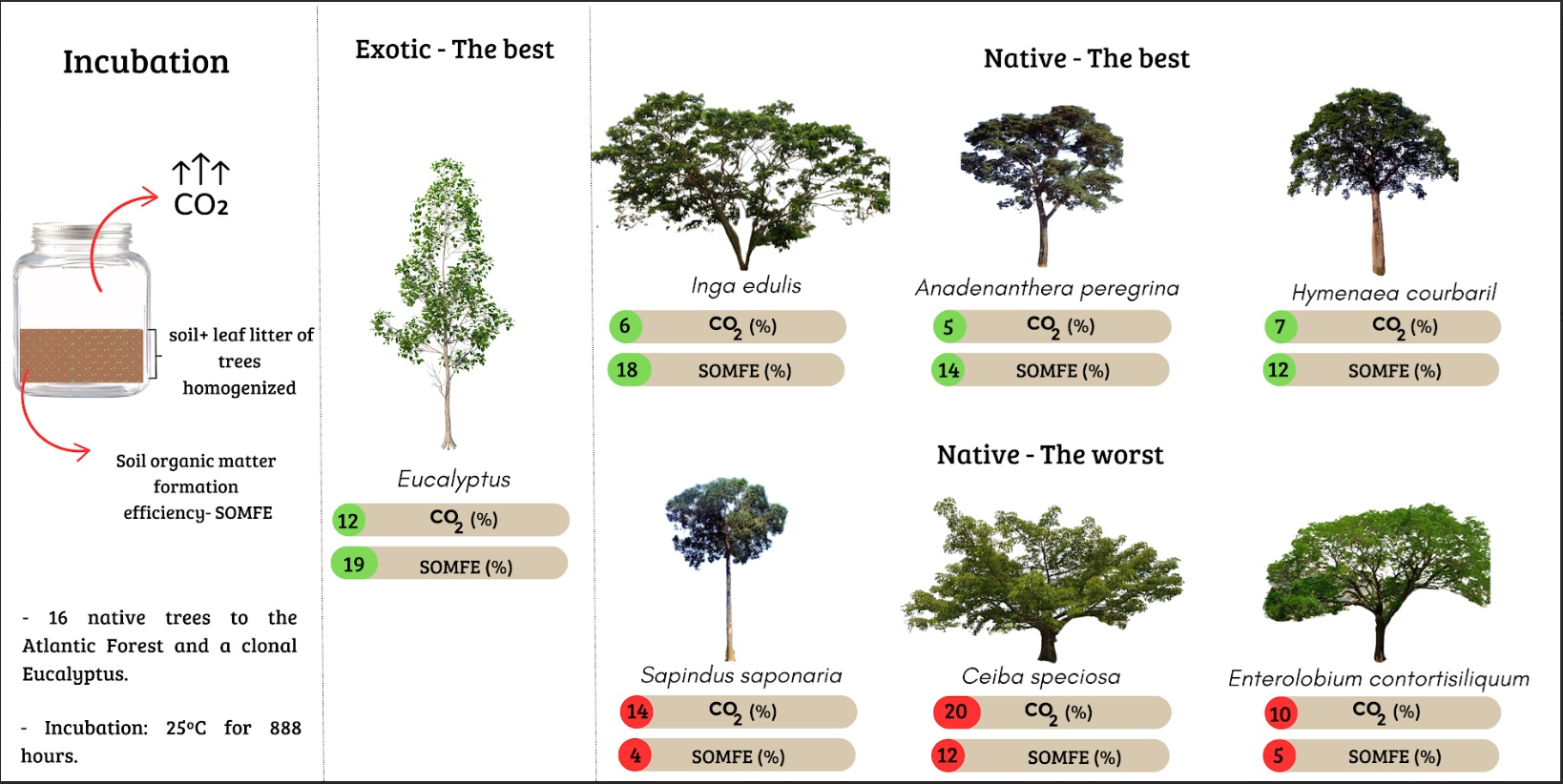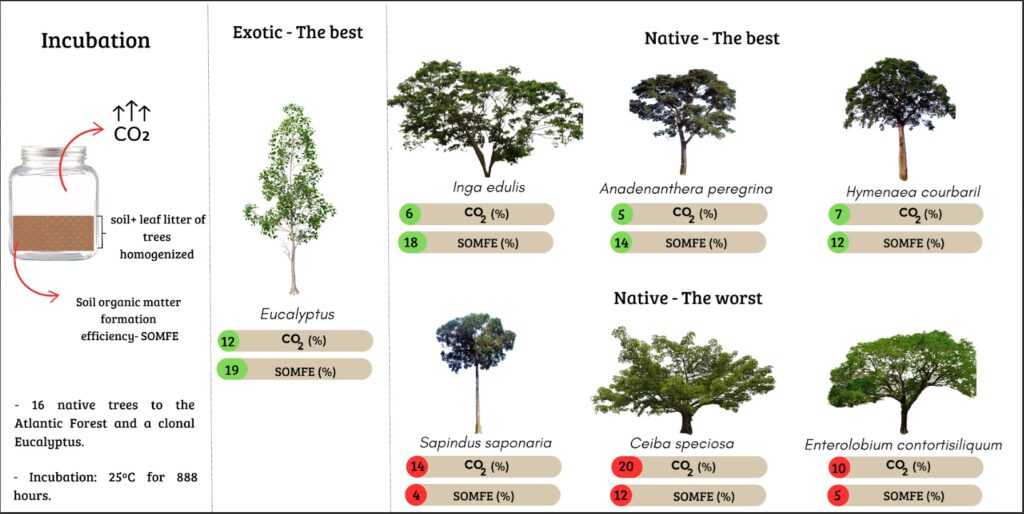Rev. Bras. Ciênc. Solo.2025;49:e0240211.
Native and exotic tree leaves litter contributions to soil organic matter formation in revegetation strategies
16/Jun/2025
DOI: 10.36783/18069657rbcs20240211
Graphical Abstract

Highlights
Tree species in the Atlantic Forest impact litter decomposition dynamics.
The formation of POM and MAOM can be associated with tree species.
Leguminous species showed slower greater efficiency of SOM formation.
edulis showed the most favorable performance in the SOM formation (18.6 %).
ABSTRACT
The use of native and exotic species in the reforestation of degraded areas has been considered an important strategy to improve soil quality. However, there is still scarce information about which species are more efficient for soil organic matter (SOM) formation. This study aimed to evaluate the decomposition of leguminous and non-leguminous tree litter, its impact on light organic matter (LOM), particulate organic matter (POM), and mineral-associated organic matter (MAOM) dynamics, and consequently, SOM formation efficiency. Leaf litter from 16 native trees to the Atlantic Forest and a clonal Eucalyptus were added to the soil (incubation experiment) to evaluate the decomposition and contribution to the formation/degradation of SOM for 888 hours. The relative contents of δ13C, N, P and C were assessed; the cumulative emission of C-CO2, potentially mineralizable C (C0), decomposition rate constant (k) and half-life time; calculation of the priming effect and physical fractionation, obtaining the LOM, POM and MAOM fractions. Cumulative emission of C-CO2 increased, especially in the first 204 hours. Non-leguminous species C. speciosa, S. saponaria and Trichilia sp. showed faster decomposition and greater mineralization potential. Lecythis sp. showed the lowest k (0.0058), suggesting better degradability. A. peregrina was the only species with a negative priming effect and a greater contribution to the LOM fraction. C. speciosa made a greater contribution to the POM fraction. The highest efficiency of SOM formation was observed in eucalyptus residues. The leguminous species A. peregrina, I. edulis, H. courbaril and P. gonoacantha also showed high SOM formation efficiency, higher contribution in the MAOM fraction, slower mineralization and lower respiration rates. I. edulis showed the lowest respiration and decomposition rates and the greatest contribution to SOM formation efficiency. Litter quality has a significantt influence on decomposition dynamics and SOM formation. In this way, the data can help in the selection of tree species with suitable functional characteristics aimed at optimizing ecosystem services, especially in relation to soil quality and the carbon cycle in reforestation and recovery programs for degraded areas in the Atlantic Forest.
187

